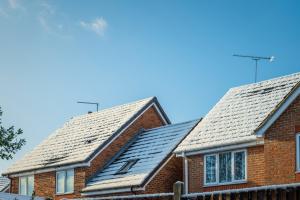— Thad Brown
NEW ORLEANS, LOUISIANA, UNITED STATES, October 23, 2023 /EINPresswire.com/ — As Wisconsin residents brace for yet another winter characterized by subzero temperatures and heavy snowfall, the importance of proper roofing insulation in residential and commercial buildings cannot be overstated. Dynamic Alliance Roofing, an industry leader, brings attention to the critical role that insulation plays in the thermal efficiency and longevity of roofs in the harsh climatic conditions typical to Wisconsin.
The Imperative of Thermal Efficiency
“Roofing insulation is not just a feature—it is a necessity, particularly in a state where winters are severe and long-lasting,” says Thad Brown, owner of Dynamic Alliance Roofing. “The objective is not solely to provide a barrier against the cold, but to create a holistic system that ensures energy conservation and significantly reduces heating costs.”
Insulation and Structural Integrity
It is a less-known fact that proper insulation contributes to the overall structural integrity of the roof. Inadequate or deteriorated insulation can lead to condensation, which in turn may cause moisture-related problems like mold, rot, and even structural failure. “A well-insulated roof is not just about comfort and cost; it’s also about safety,” notes Brown.
Types of Insulation Suitable for Wisconsin’s Climate
Insulation materials vary in their properties and performance, and understanding the differences is crucial for effective application. Some of the commonly used materials include fiberglass, foam boards, and cellulose. “The choice of material is contingent upon various factors, including the type of roof, the existing ventilation system, and of course, the local climate. In Wisconsin, it’s vital to opt for materials that offer high R-values—a measure of thermal resistance—given the extreme cold,” explains Brown.
Challenges Posed by Inadequate Insulation
Lack of proper insulation can lead to a myriad of issues. The most immediate is thermal discomfort, but the problems don’t stop there. Inefficient insulation contributes to higher energy bills, as the heating systems work overtime to maintain indoor temperatures. In the long run, this is neither economically nor environmentally sustainable. “Moreover,” adds Brown, “improperly insulated roofs are more susceptible to ice dams, which can cause significant water damage.”
Importance of Professional Assessment and Installation
Given the complexities involved, it’s crucial to rely on professional assessments for both new installations and upgrades. A comprehensive evaluation by experts can reveal not just the quality of existing insulation but also identify potential problem areas that may not be apparent to the untrained eye. “It’s not merely about slapping on an additional layer of material. It’s about understanding the existing architecture, ventilation, and moisture control systems to provide an insulation solution that is both effective and long-lasting,” Brown elaborates.
The Way Forward
The increasing severity of winters in Wisconsin underscores the imperative of implementing robust insulation systems as a preventative measure. Public awareness about the role of proper insulation is the first step towards fostering more sustainable and energy-efficient communities.
Morgan Thomas
Rhino Digital, LLC
+1 504-875-5036
email us here
Visit us on social media:
Facebook
![]()
Article originally published on www.einpresswire.com as The Role of Proper Insulation in Combating Wisconsin’s Cold Climate: A Comprehensive Analysis



